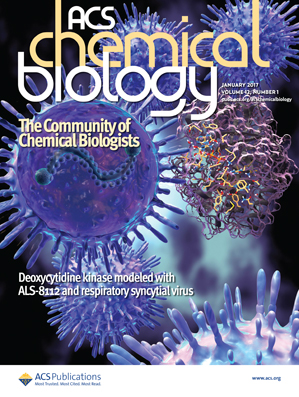Neratinib Alone or in Combination with Immune Checkpoint Inhibitors with or without mTOR Inhibitors in Patients with Fibrolamellar Carcinoma
IF 3.8
2区 生物学
Q2 BIOCHEMISTRY & MOLECULAR BIOLOGY
引用次数: 0
Abstract
Introduction: Fibrolamellar carcinoma (FLC) displays upregulation of several oncogenes, including HER2, and multiple immune-suppressive mechanisms. We investigated the efficacy and safety of the pan-HER tyrosine kinase inhibitor neratinib as monotherapy (SUMMIT phase 2 basket study) or with immune checkpoint and/or mTOR inhibitors (compassionate-use program) in patients with FLC. Methods: Patients received neratinib 240 mg/day orally in SUMMIT, or as doublet or triplet combinations with pembrolizumab 2 mg/kg intravenously every 3 weeks, nivolumab 240 mg intravenously every 2 weeks, everolimus 7.5 mg/day orally, or sunitinib 37.5 mg/day orally under compassionate use. The primary endpoint in SUMMIT was objective response rate; safety was a secondary endpoint. Results: Fifteen patients with FLC received neratinib monotherapy in SUMMIT. The objective response rate was 5% (95% CI 0–21.8) and the disease control rate was 13.3% (95% CI 1.7–40.5). Upon progression, five had added immune checkpoint inhibitors with or without everolimus or sunitinib. Two additional patients received neratinib-based combinations outside of SUMMIT, for a total of 17 neratinib-treated patients. One patient who received neratinib plus pembrolizumab had a confirmed partial response, one treated with neratinib plus everolimus had stable disease lasting 6 months, and one who received neratinib plus pembrolizumab plus sunitinib had stable disease lasting 16 months. Grade 3/4 adverse events with neratinib monotherapy occurred in 10 (66.7%)/2 (13.3%) patients, respectively. Grade 3 adverse events with neratinib-based combinations were hyperglycemia (n = 1; neratinib plus pembrolizumab), hepatic failure, and anaphylaxis (n = 1 each, neratinib plus pembrolizumab plus everolimus). There were no grade 4 adverse events with combination therapy. Conclusion: In patients with FLC, single-agent neratinib had limited efficacy, but clinical benefit was observed with neratinib in combination with immunotherapy and/or mTOR-targeted agents.奈拉替尼单独或与免疫检查点抑制剂联合(无论是否使用mTOR抑制剂)治疗纤维母细胞瘤患者
简介纤维母细胞瘤(FLC)表现出包括HER2在内的多种癌基因上调和多种免疫抑制机制。我们研究了泛HER酪氨酸激酶抑制剂奈拉替尼作为单药(SUMMIT 2期篮子研究)或与免疫检查点和/或mTOR抑制剂(compassionate-use计划)一起用于FLC患者的疗效和安全性:在SUMMIT研究中,患者口服奈拉替尼240毫克/天,或与pembrolizumab 2毫克/千克静脉注射每3周一次、nivolumab 240毫克静脉注射每2周一次、依维莫司7.5毫克/天口服或舒尼替尼37.5毫克/天口服进行双联用或三联用。SUMMIT的主要终点是客观反应率,安全性是次要终点:15名FLC患者在SUMMIT中接受了奈拉替尼单药治疗。客观反应率为5%(95% CI 0-21.8),疾病控制率为13.3%(95% CI 1.7-40.5)。病情恶化后,有五名患者在使用或不使用依维莫司或舒尼替尼的情况下加用了免疫检查点抑制剂。另有两名患者在SUMMIT之外接受了基于奈拉替尼的联合治疗,总共有17名患者接受了奈拉替尼治疗。其中一名接受了奈拉替尼加pembrolizumab治疗的患者确诊为部分应答,一名接受了奈拉替尼加依维莫司治疗的患者病情稳定了6个月,一名接受了奈拉替尼加pembrolizumab加舒尼替尼治疗的患者病情稳定了16个月。接受奈拉替尼单药治疗的患者中,分别有10人(66.7%)和2人(13.3%)出现了3/4级不良事件。奈拉替尼联合疗法的3级不良事件为高血糖(n = 1;奈拉替尼加pembrolizumab)、肝功能衰竭和过敏性休克(各n = 1,奈拉替尼加pembrolizumab加依维莫司)。联合疗法未出现4级不良事件:结论:在FLC患者中,单药奈拉替尼的疗效有限,但奈拉替尼与免疫疗法和/或mTOR靶向药物联合使用可观察到临床获益。
本文章由计算机程序翻译,如有差异,请以英文原文为准。
求助全文
约1分钟内获得全文
求助全文
来源期刊

ACS Chemical Biology
生物-生化与分子生物学
CiteScore
7.50
自引率
5.00%
发文量
353
审稿时长
3.3 months
期刊介绍:
ACS Chemical Biology provides an international forum for the rapid communication of research that broadly embraces the interface between chemistry and biology.
The journal also serves as a forum to facilitate the communication between biologists and chemists that will translate into new research opportunities and discoveries. Results will be published in which molecular reasoning has been used to probe questions through in vitro investigations, cell biological methods, or organismic studies.
We welcome mechanistic studies on proteins, nucleic acids, sugars, lipids, and nonbiological polymers. The journal serves a large scientific community, exploring cellular function from both chemical and biological perspectives. It is understood that submitted work is based upon original results and has not been published previously.
 求助内容:
求助内容: 应助结果提醒方式:
应助结果提醒方式:


